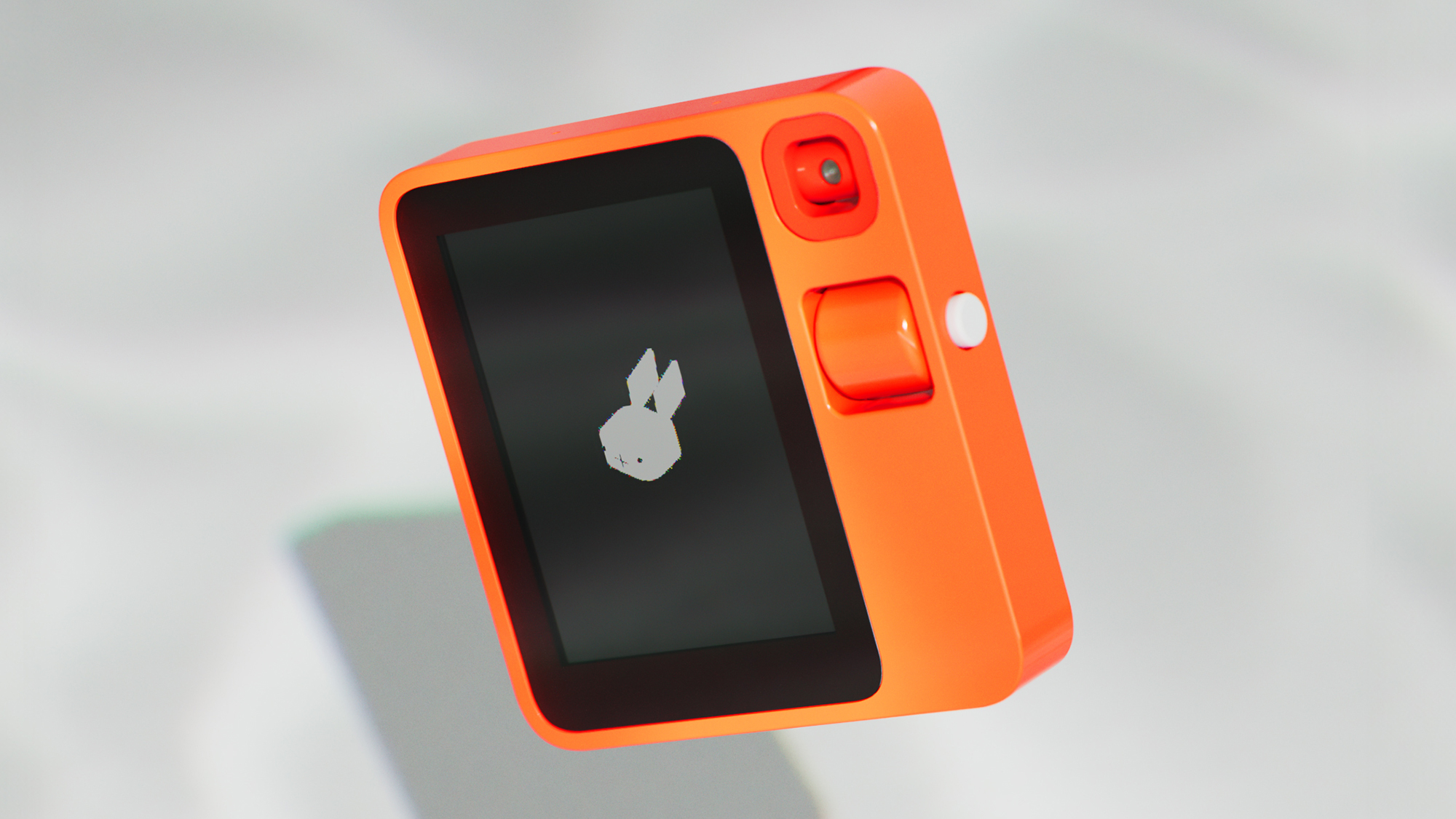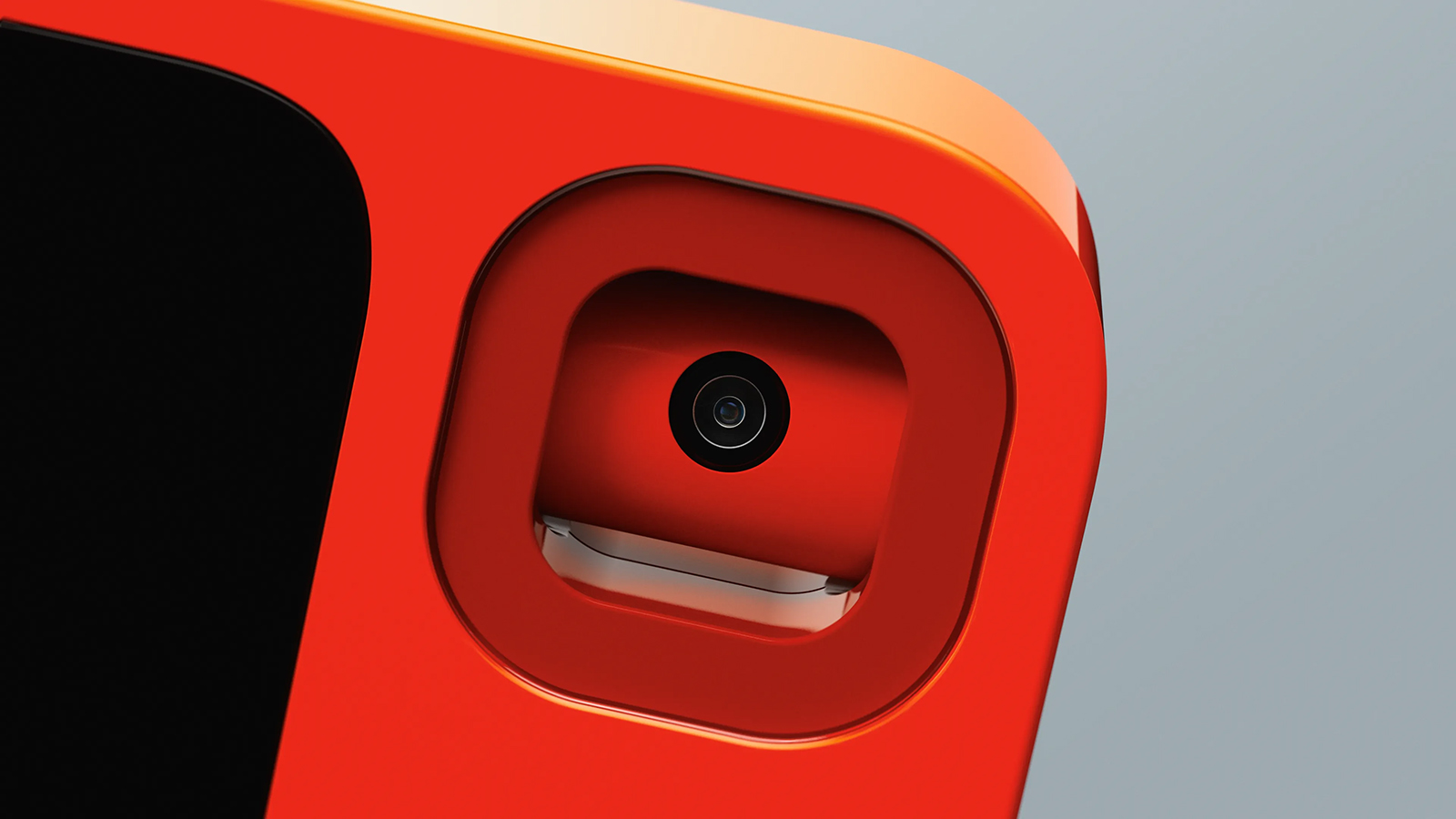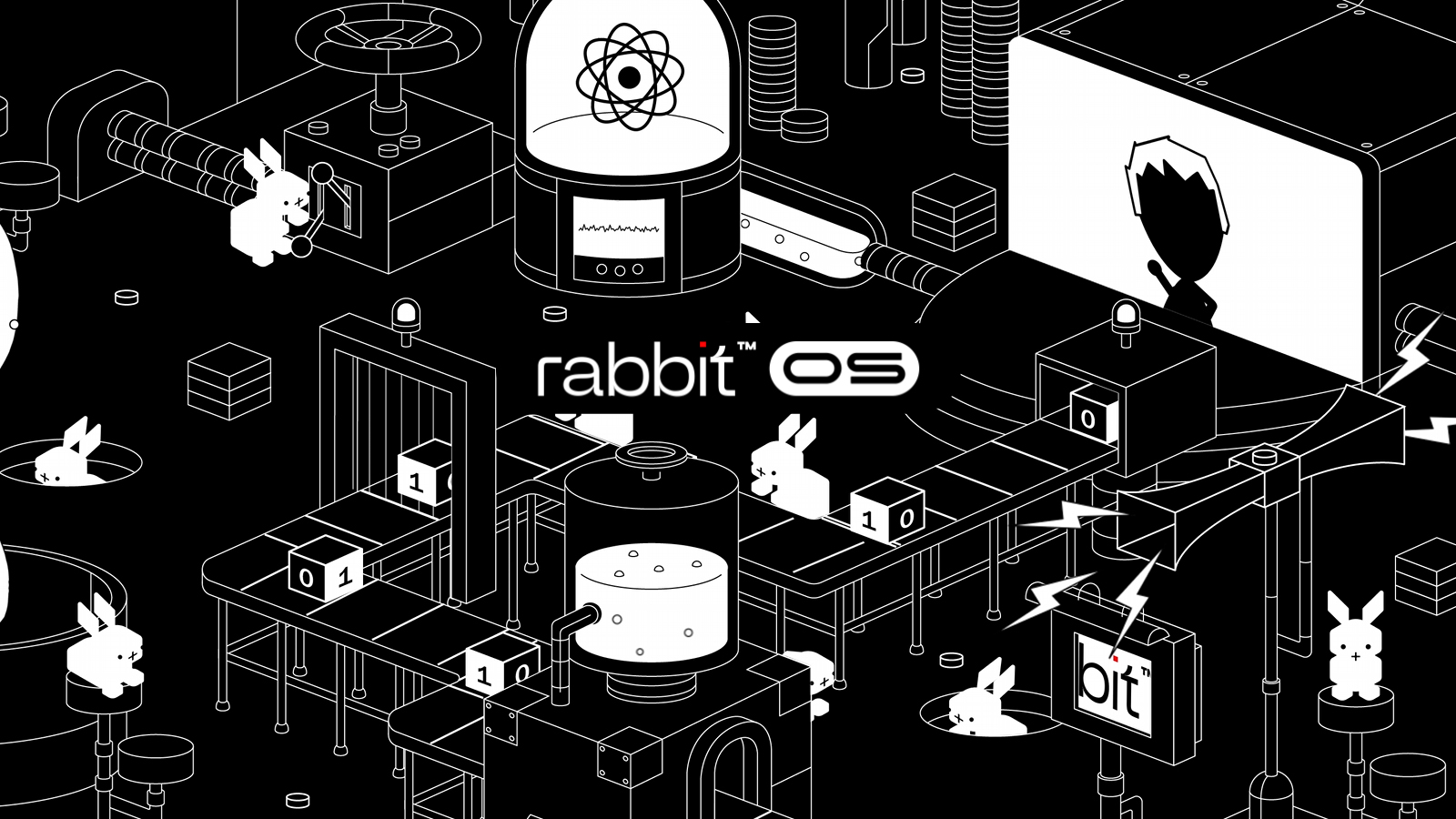What exactly is the Rabbit R1? CES 2024's AI breakout hit explained

The Rabbit R1 made its debut in January 2024, at CES 2024, and was an instant hit – promising a new category of device and a new way of interacting with the apps and services that we rely on every day.
Co-designed by Teenage Engineering, this charming sidekick gizmo could take pocket gadgets to the next level – it's like a smartphone, but with an intuitive, unified, AI-driven interface that means (in theory) that you don't need to interact with individual apps and websites. It could be the face of one of the biggest tech trends of 2024.
This guide is for anyone curious about the Rabbit R1 device and the different ways in which it might change personal computing – or at least voice assistants. We've pulled together everything you need to know about the device, including its cost, functions, and AI smarts.
The first batches of the Rabbit R1 are shipping to users later in 2024, although availability has been rather limited to begin with – so you might have to wait a while to get your very own Rabbit R1.
Rabbit R1: one-minute overview

The Rabbit R1 is a lot like a phone in terms of its looks, and in some of its features: it has a camera and a SIM card slot, and it supports Wi-Fi and Bluetooth. What's different, and what makes the Rabbit R1 special, is the interface: instead of a grid of apps, you get an AI assistant that talks to your favorite apps and does everything for you.
For example, you could get the R1 to research a holiday destination and book flights to it, or queue up a playlist of your favorite music, or book you a cab. In theory, you can do almost anything you can already do on your phone, just by asking. That said, there remain a lot of questions over exactly how it works and protects your privacy in the way it describes.
We've seen next-gen personal assistants depicted in movies like Her, and the R1 is trying to make that a reality – leveraging the latest AI capabilities to replace the traditional smartphone interface with something a lot more intuitive and slick.
Sign up for breaking news, reviews, opinion, top tech deals, and more.
Introducing r1. Watch the keynote. Order now: https://t.co/R3sOtVWoJ5 #CES2024 pic.twitter.com/niUmjFvKvEJanuary 9, 2024
Another way to think about the Rabbit R1 is as an evolution of the Amazon Echo, Google Nest, and Apple HomePod smart speakers. The voice-controlled digital assistants on these devices can do some rudimentary tasks – like check the weather or play music – but the R1 wants to go way beyond what they're capable of.
Rabbit says the R1 is "the future of human-machine interfaces", and you can check out its pitch for the device in its very Apple-flavored CES 2024 keynote above.
Rabbit r1: release date and price
The first batch of 10,000 units of the Rabbit R1 were made available to preorder at the same time as the device was announced at CES, on January 9, 2024. Those units quickly sold out, as did a second batch of 10,000 units made available shortly after.
Supply does now seem to be stable, so you can currently head to the Rabbit website to preorder a unit. Rabbit says that the people who got their preorders in first should start having their devices shipped to them in March and April 2024.
The price of the Rabbit R1 starts at $199, which works out at around £155 / AU$300. To begin with at least, the Rabbit R1 is available to order in the US, Canada, the UK, Denmark, France, Germany, Ireland, Italy, Netherlands, Spain, Sweden, South Korea, and Japan.
What's more, unlike rival AI devices such as the Humane AI Pin, there's no ongoing subscription fee that you have to pay out.
Rabbit r1: hardware

The Rabbit r1 is square, and bright orange, and comes with a 2.88-inch color touchscreen on the front. It's quite a compact device, almost small enough to fit in the palm of a hand, and it weighs in at 115 grams (about 4 oz). There's only one design, for now – you can't pick this up in multiple colors.
We know there's a far-field mic embedded in the R1, as well as built-in speakers. There's an integrated 360-degree camera here too, which is apparently called the Rabbit Eye. You can interact with elements by touching the screen, and there's an analog scroll wheel at the side of the device as well, if you need it.

On the right of the Rabbit R1 is a push-to-talk button, which you make use of whenever you want to talk to the AI assistant on the device. There's no need for any "hey Google" or "hey Siri" wake command, and it also means the assistant doesn't have to be constantly listening out for your voice. Double-tapping the button activates the on-board camera.
Under the hood we've got a 2.3GHz MediaTek Helio processor, and Rabbit says the device offers "all day" battery life. That battery can be charged with a USB-C charge cable and power adapter, but it's worth bearing in mind that these aren't included in the box, so you'll have to use ones you've already got.
Rabbit says that building its own hardware – rather than just releasing a phone app – gives it more freedom in terms of what it can do. You can read more on this approach in the thread below.
Why can’t r1 just be an app?Here’s what we think: (thread) pic.twitter.com/yqOOcOgmgNFebruary 5, 2024
Rabbit R1: software
With its bright orange casing, the Rabbit r1 looks kind of cute, but it's the software that really makes it stand out. If you've used something like ChatGPT or Google Bard already, then this is something similar: Rabbit OS is fronted by an AI chatbot, capable of both answering questions and performing tasks.
In the CES keynote demo, Rabbit founder and CEO Jesse Lyu showed the R1 answering philosophical questions, checking stock prices, looking up information about movies, playing music on Spotify, booking an Uber, ordering a pizza, and planning a vacation (complete with flights and hotel reservations).
It's an impressive set of tricks, and Rabbit is partnering with a select number of companies in order to make it happen. We know, for example, that the internal search engine on the R1 is going to be powered by a large language model (or LLM) supplied by Perplexity AI.

To get some of this working, you need to connect the Rabbit OS with your various apps and services, which can be done through a web portal. From the demo we've seen, it looks as though Spotify, Apple Music, YouTube Music, Expedia, Uber, eBay, and Amazon will be some of the services you can connect to.
Rabbit is keen to emphasize that it doesn't store any of your login details or track you in any way – it simply connects you to the apps you need – though the specifics of how it does this via the cloud are still unclear.
Rabbit's privacy page gives us a few more details, stating that "when you interact with rabbit OS, you will be assigned a dedicated and isolated environment on our cloud for your own LAM [large action model]. When our rabbits perform tasks for you, they will use your own accounts that you have securely granted us control over through our rabbit hole web portal".
It also adds that "we do not store your passwords for these services. Rabbits will ask for permission and clarification during the execution of any tasks, especially those involving sensitive actions such as payments." Exactly how Rabbit provides each user with a "dedicated and isolated environment" in its cloud isn't yet clear, but we should find out more once it lands with its first early adopters.
We've also been told the R1 can handle communication, real-time translation, and analyze images taken with the camera – show the R1 what's in your fridge, for example, and it could up with a dish you can cook.
The Rabbit R1 promises speedy responses too, quicker than you'd get with other generative AI bots. You can converse with the R1 as you would with Siri or Google Assistant, or you can bring up an on-screen keyboard by shaking the device. It calls its on-board AI a Large Action Model or LAM, similar to a Large Language Model or LLM (familiar from bots like ChatGPT), but with a lot more agency.

On top of all this, Rabbit says you can teach the R1 new skills. So, if you showed it how to go online and order your groceries for you, the next time it would be able to do that all by itself. In the CES demo, we saw the Rabbit R1 learning how to create AI images through Midjourney, and then replicating the process on its own.
Interestingly, Rabbit says it doesn't want the R1 to replace your phone – it wants to work alongside it. The R1 can't, for example, browse YouTube, check social media or let you organize your email (at least not yet), so it would seem that the humble smartphone will be sticking around for a while yet.
While some of the specifics about how the Rabbit R1 works and interacts with your favorite apps and services remain unclear, it's undoubtedly one of the most exciting pieces of AI hardware so far – as shown by the rapid sell-out of its early stock. We'll bring you more first impressions as soon as we've got our hands on one of 2024's early tech stars.
You might also like

Dave is a freelance tech journalist who has been writing about gadgets, apps and the web for more than two decades. Based out of Stockport, England, on TechRadar you'll find him covering news, features and reviews, particularly for phones, tablets and wearables. Working to ensure our breaking news coverage is the best in the business over weekends, David also has bylines at Gizmodo, T3, PopSci and a few other places besides, as well as being many years editing the likes of PC Explorer and The Hardware Handbook.